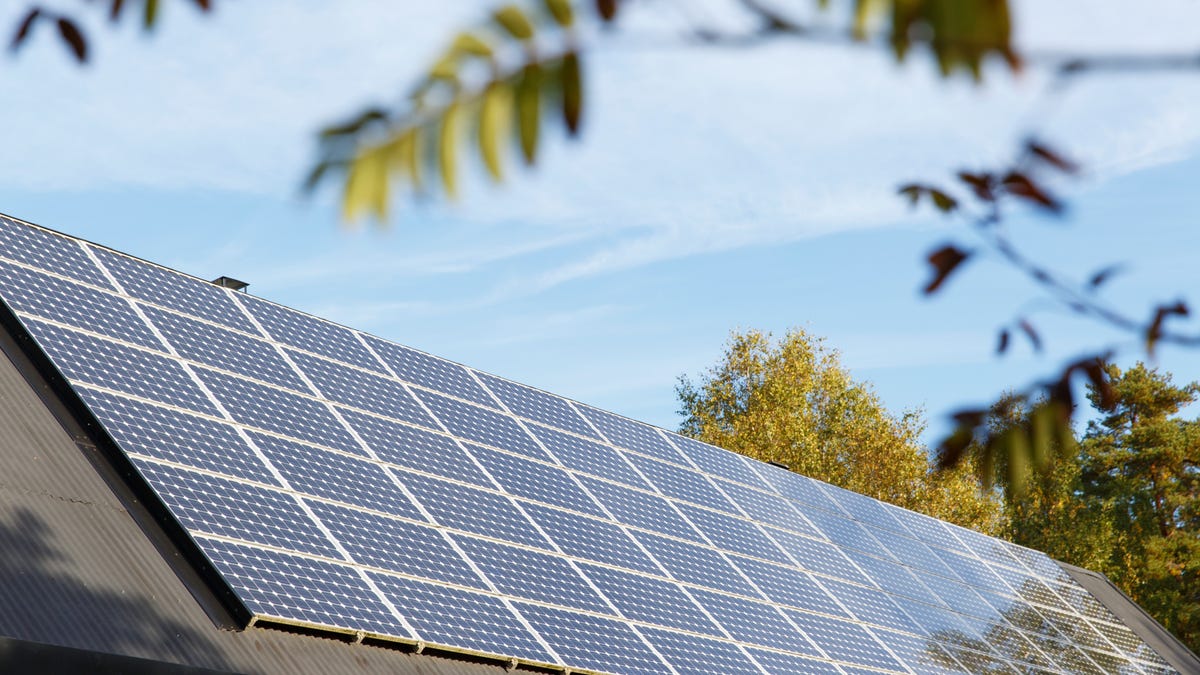Solar panels vs. Tesla Solar Roof: The Biggest Differences, Broken Down
When you think of solar power systems, you probably imagine the classic solar array: some black panels that point toward the sky and absorb the energy of the sun’s light and convert it into usable electricity. But if you look closely at the roofs of some houses, you might notice a surprise.
In 2016, Tesla — yes, that Tesla — introduced something novel. Instead of solar panels that sit in your front yard or stand out on the roof, Tesla decided to turn every shingle into a solar panel. The Tesla Solar Roof replaces an existing roof and captures sunlight to help power your home in a clean and streamlined manner.
There are some significant downsides, namely that the Tesla Solar Roof is quite expensive. (Tesla does not operate a public relations department to field requests for comment.)
For homeowners interested in solar energy, that creates the ultimate question: Should you go with the standard solar panel system or try the less intrusive — but pricey — Tesla Solar Roof? To help you with your buying questions, I have compiled the biggest differences between the two solar options below.
Solar panels should be relatively familiar by now, as they have been gaining popularity and have become more affordable in recent years. An array can be located on your roof or set to stand in your yard, depending on what works best for you. While there are a variety of different brands and types of panels, they all offer a clean energy alternative to fossil fuel sources like coal or natural gas. These panels can be expensive, and some are more difficult to install than others. But for the most part, you can expect cheaper energy bills, a smaller carbon footprint and increased property value.
Read more: 5 thing to consider before you buy solar panels
Instead of using panels, the Tesla Solar Roof turns your entire roof into your solar array. The Tesla solar roof uses tempered glass panels that replace your standard shingles, providing the same protection you’d expect from a traditional roof while also capturing solar energy. The Tesla Solar Roof is novel, but less proven and harder to transfer to another home if you move because they are custom made for each roof.
Solar panels or a Tesla Solar Roof?
Pricing
Price is a tricky thing when it comes to solar systems, as a lot of it is going to be dependent on what your house and property is capable of supporting. There is the cost of solar panels, the infrastructure needed to support them, the installation costs — and you have to account for the actual capacity of the system. In both cases, you can get tax credits and other incentives for installing these systems, so that will help to ease the price somewhat. Research suggests solar panels cost between $15,000 to $25,000 to buy and install.
For the sake of simplicity: conventional solar panels are cheaper than the Tesla solar roof in terms of the overall cost. Tesla has also had some challenges keeping the price down for its solar roof system, which has been a point of issue for some people. Price estimates suggest prices can scale from $30,000 to $75,000, with some people reporting installation costs as high as $100,000.
Watch this: Hydrogen, solar and wind: How this ship creates its own energy
Installation
The installation process for solar energy systems can be complicated. In general, traditional solar panels are easier because they can be installed in different places depending on the layout of your property — either on your roof or on the ground. The Tesla Solar Roof can only be installed on your roof, obviously, and is a bit more of a to-do since it requires replacing your entire roof. There are fewer contractors familiar with the Tesla solar roof system than conventional panels, so this can create challenges in finding a capable installer.
Solar power capabilities
Both the Tesla Solar Roof and traditional solar panels will have a similar ability to meet your power needs, although your ability to scale your solar power system to your electricity needs might be more limited with the Tesla Solar Roof compared to panels. It will likely be easier to expand a setup with traditional solar panels in the future if you find your electricity needs have increased.
Mobility and longevity
One downside of the Tesla Solar Roof is the fact that it really can’t move with you. Because it is custom-fit to the roof of your home, you can’t pack it up and install it on another home. Conventional solar panels offer a bit more flexibility here, as you could potentially take your solar system with you — though you may want to leave it to benefit from the boost in property value that they provide.
Winner for most: Solar panels
For now, conventional solar panels are the safer bet if you are looking to make the switch to solar power. They are a proven product. They are also typically cheaper and offer a bit more flexibility in terms of how you install them.
Tesla’s Solar Roof shows a lot of promise, but the custom tiles can be cost-prohibitive and early troubles with the product make it hard to recommend at this stage. Future versions of the Tesla Solar Roof may improve and make good on the promising concept. For now, stick with what works so you can save on your energy bill and shrink your carbon footprint.
More about solar energy
For all the latest world News Click Here

